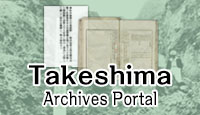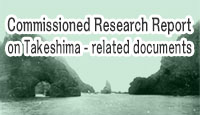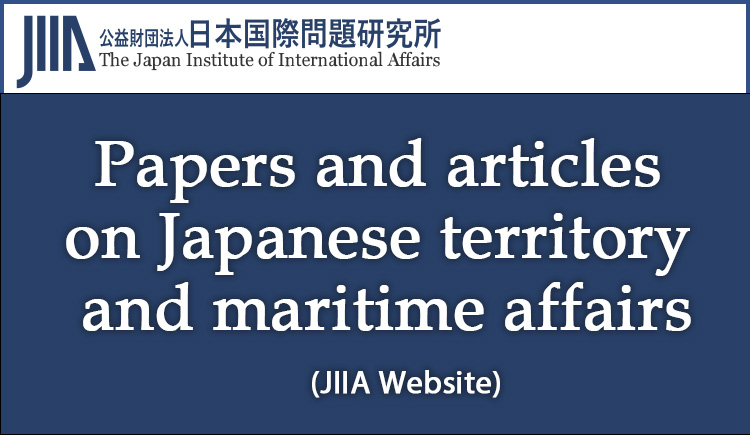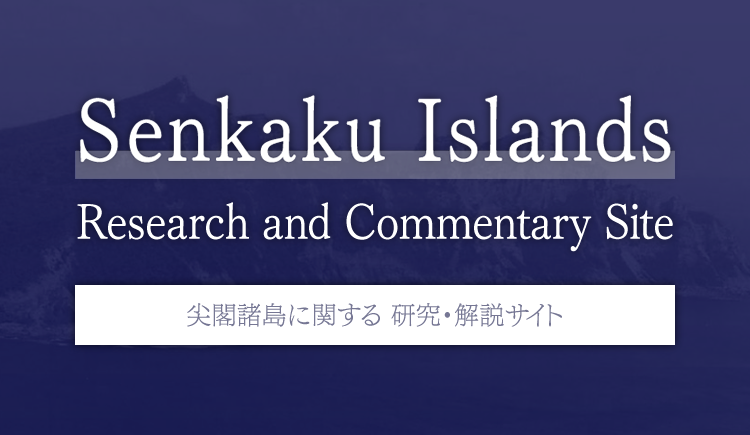The documents and materials published on this website were collected, researched, and prepared with advice from experts, as a part of a Government-commissioned project. The contents of this website do not reflect the views of the Government. Links to external sites (domains other than https://www.cas.go.jp) are not under the management of this site. For linked websites, please check with the organization/group that manages the website for the link in question.
Commentary on themes by historical period
4. Territorial clauses in the Peace Treaty and Australia’s position
On July 20, 1951, James Plimsoll, an Australian diplomat who at that time served as the Australian representative to the UN Commission for the Unification and Rehabilitation of Korea (UNCURK) in Busan, wrote in telegram No. 3811 sent to the Australian Department of External Affairs that the “South Korean Foreign Minister had asked for our government’s support for its own proposed four amendments to the draft Peace Treaty.” One of these four matters was such that: (a) a request for the insertion of the wording “and all islands which were part of Korea prior to its annexation by Japan” just before the word “including” in Article 2(a); and the two islands of “DOK DO and PRANG DO” should be specifically mentioned in the text of the Peace Treaty.
The above newfound document confirms that: in a letter dated July 19, 1951 from Yang Yu-Chan, South Korean Ambassador to the United States, to U.S. Secretary of State Dean Acheson, South Korea demanded Takeshima, while around the same time it also made a request to Australia for the same.
Telegram No. 32 sent by the Australian Department of External Affairs on July 25, 1951 to Plimsoll in Busan12 stated that: “we would challenge the protocol and behavior of the South Korean Government who has approached us via you as an intermediary to deal with issues of this kind, in particular. However, we would be allowed to simply communicate to the South Korean Foreign Minister, in a completely unofficial manner, our provisional response to his suggested amendments to the Treaty of Peace with Japan. We are not quite certain about how practical South Korea’s proposed revisions are, but in principle, you might as well tell [South Korea (added by the author)] that we can understand, in sympathy, the South Korean Government’s desire to secure its own interests through such a treaty,” showing that Australia was unwilling to act as an intermediary to make South Korea’s request happen.
Speaking of Takeshima, the Australian Department of External Affairs noted that “we are unable to locate the two islands you mentioned on any maps of Korea in our possession.” This comment corresponds, more or less, to certain records on the part of the United States13, according to which: even though the matter in question had been investigated at the request of the ROK Embassy in the United States, a Mr. Boggs, an expert on geography in the U.S. State Department, said that “he had ‘tried all resources in Washington,’ he could not identify Dokdo or Parangdo,” and another State Department official in charge of Korea, “Frelinghuysen reported that an ROK Embassy officer had told him they believed Dokdo was near Ulleungdo, or Takeshima Rock, and suspected that Parangdo was too.”
A document dated December 2, 1953, compiled by the New Zealand Department of External Affairs, titled “Japanese-Korean Relations with Special Reference to the Dispute concerning Takeshima Island” contained, under the section “The Takeshima dispute,” a record of the South Korean Foreign Minister’s request to the Australian Government as seen in the telegram dated July 21, 195114. According to this, the South Korean Foreign Minister requested that “Dokdo” and “Prangdo” should become Korean territories, explaining that “these two islands were some distance to the south of the mainland.” The South Korean side could not even provide precise coordinates for these islands. It was only natural that the United States and Australia decided to turn down South Korea’s request.
The U.S. State Department document “Treaty Changes” dated August 7, 195115, a summary of the United States’ views and discussions in terms of comments from countries concerned on the draft Peace Treaty, and whether or not their suggestions should be incorporated into the treaty text, has found that South Korea was the only country that made a request for the insertion of “Dokdo” and “Parangdo” in Article 2(a) of the draft treaty. It follows, therefore, that “making Takeshima belong to South Korea is just what only the country itself wants and requests, and such a demand cannot be of any force and effect in determining sovereignty over Takeshima,” which represents an established fact.
Note 11
Amendments to Draft Japanese Peace Treaty 27th July, 1951 (NAA, Item ID: 140412, Japanese peace settlement). Included in the FY2021 Publication. “Prangdo” apparently refers to “Parangdo”.
Note 12
supra note 11
Note 13
Office Memorandum, To: Allison From: Fearey, Date: August. 3, 1951 (Comments on Korean Note Regarding U. S. Treaty Draft (NARA, RG59, Lot54 D423, JAPANESE PEACE TREATY FILES OF JOHN FOSTER DULLES, Box 8, Korea)).*
Note 14
JAPANESE - KOREAN RELATIONS WITH SPECIAL REFERENCE TO THE DISPUTE CONCERNIMG TAKAESHIMA ISLAND (ANZ, Post-war settlement - Japanese peace settlement – Territorial (Code:R20107058)) ), page 9. Included in the FY2021 Publication.
Note 15
Treaty Changes (NARA, RG59, Records of the Bureau of Public Affairs, Records Relating to the Japanese Peace Treaties, 1946-1952, Lot78 D173 Box2).* Included in the FY2021 Publication.
Conclusion
The Australian Department of External Affairs’ telegram No. 32 dated July 25, 1951 clearly stated at its end that “we have no objection to drafting the Peace Treaty in such a manner that those islands deemed eligible to be properly recognized as part of Korea are specified to the extent possible.” This statement shows that Australia supported the U.K. policy at the US-UK working-level consultations, that is, “desirability of disposing of islands between Japan and Korea by specific mention.”
A U.S. document dated June 1, 1951 contained the New Zealand Government’s view on the US draft treaty, which reads that: “in view of the need to assure that there would be no territorial dispute in the future over any island in the vicinity of Japan, it would be desirable to accurately confirm Japan’s territory with the aid of a latitude-longitude location as proposed by Article 1 of the UK draft treaty”16. This indicates that the U.K. policy on territorial clauses in the Peace Treaty at the Commonwealth Canberra Conference in 1947, that is, “very careful drafting of this section will be necessary in order to ensure that no islands are left in disputed sovereignty” was also shared by New Zealand.
It was by no means likely that the policy, as seen above, shared by the United Kingdom, as well as New Zealand and Australia was disregarded in drafting territorial clauses in the Peace Treaty. In terms of Article 2(a) of the Peace Treaty, saying that “Japan, recognizing the independence of Korea, renounces all right, title and claim to Korea, including the islands of Quelpart, Port Hamilton and Dagelet,” no disagreement was seen between the United States and Commonwealth countries, and thus, it is clearly evident from the text that Korean island territories that Japan was to renounce did not include Takeshima.
The above document “Japanese-Korean Relations with Special Reference to the Dispute concerning Takeshima Island,” prepared by the New Zealand Department of External Affairs, stated in the section “The Takeshima dispute” that: “Despite this indication of Korean dissatisfaction, the Peace Treaty was finally signed without amendment of article 2(a) in the sense desired by Korea.” As discussed above, it was the Allied Powers’ common understanding that Takeshima was retained by Japan.
Note 16
JAPANESE PEACE TREATY, Working Draft and commentary, June 1, 1951 (NARA, RG59, Central Decimal File 1950-54 Box3009, 694.001/6-151).*
Takeshima
Research and Commentary Site
- I Comprehensive issues
- II Commentary on themes by historical period
- III Analysis of claims by other countries





